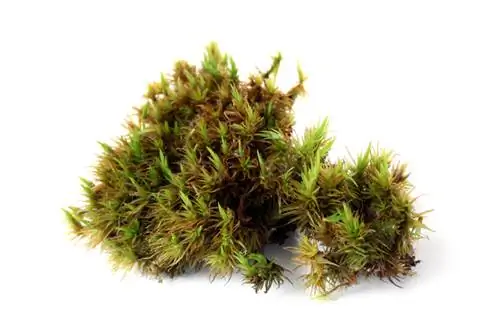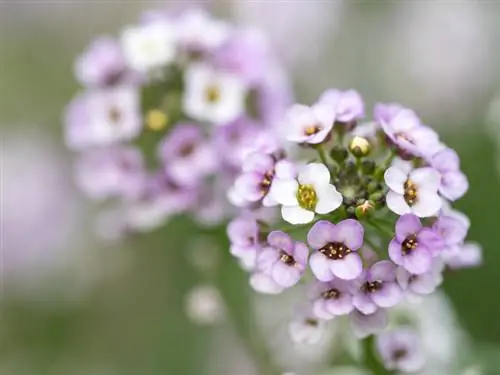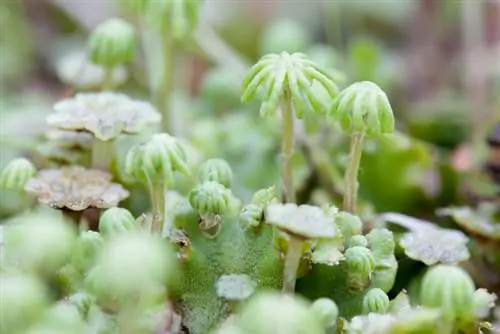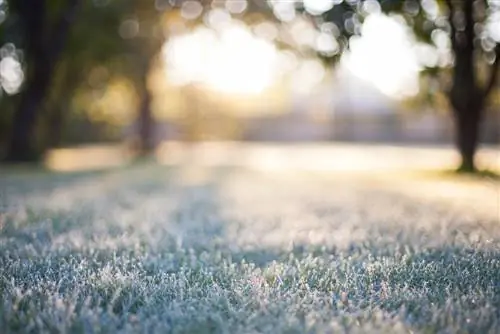- Author admin [email protected].
- Public 2023-12-16 16:46.
- Last modified 2025-06-01 06:02.
Mosses have colonized the earth for more than 350 million years. The green land plants can safely do without roots and reproduce through alternating generations. Moss represents the largest family with more than 15,000 species. This profile shows what makes the prehistoric plants special.
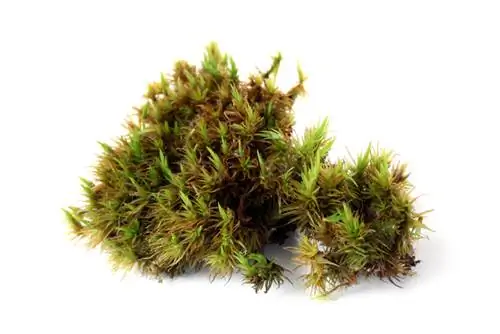
What is moss?
Leaf moss (Bryophyta) is the largest group of mosses with over 15.000 species distributed worldwide. They grow on earth, trees or stones, have leafy stems and reproduce through alternation of generations. The subgenus of peat mosses is of economic importance.
Systematics and appearance at a glance
Researchers have been working on bryology, the science of mosses, since the 18th century. To this day, new, fascinating details about the tiny plants are still being discovered, making their boring classification as weeds absurd. The following profile lists interesting facts about moss:
- Leaf moss (Bryophyta) as the largest group within the plant division Mosses
- More than 15,000 known species with worldwide distribution
- Growth on earth (terrestrial), on trees (epiphytic) and on stones (lithophytic)
- Growth heights from 1 mm to 20 cm with leafy stems
- Growth form tightly upright, cushion-forming (acrocarpic) or branched, lawn-forming (pleurocarpic)
- Rootless anchoring in the subsoil via single-cell strands, without parasitic function
- Absorption of nutrients and water via rain
- Reproduction by alternating generations between sexual and asexual
The only subgenus of economic importance is the peat mosses, which produce plant substrates or sphagnum for the cultivation of orchids.
Ingenious survival strategies - That’s why fighting them is so tricky
Due to the lack of roots, deciduous moss is weak in competition. It therefore specifically looks for locations that are not colonized by other plants or where they are weak. This means that the green moss appears in places that we don't like at all, such as on paved paths, walls, terraces or in the lawn. Fighting it is so problematic because deciduous moss has developed these survival strategies over millions of years:
- The smallest amount of rainfall covers the need for water and nutrients
- Dried moss can withstand heat up to 110 degrees and cold up to -196 degrees Celsius
- Photosynthesis is still possible in many species at temperatures below 0 degrees Celsius
These and other abilities enable leaf moss and other mosses to sprout again, even after years of dormancy, suppression and control.
Tip
Scientists have suspected it for 200 years - but the proof could only be provided in 2000. Among the liverworts, Colura is a tropical genus whose 20 species act as miniature carnivorous plants. The 1 mm small leaves act as a catching device for ciliates. After a short time, the protozoa die and are processed by the moss tissue.

